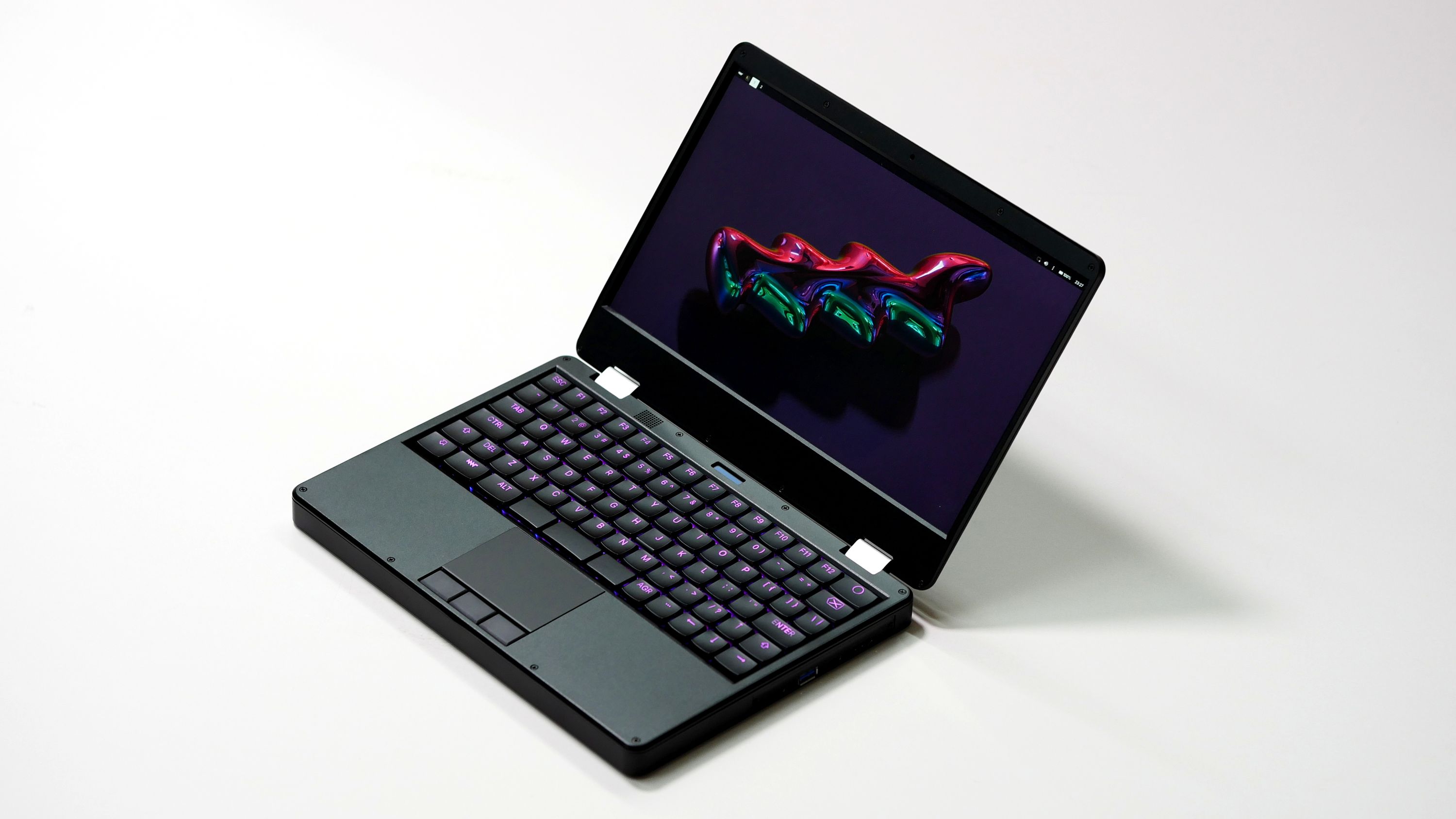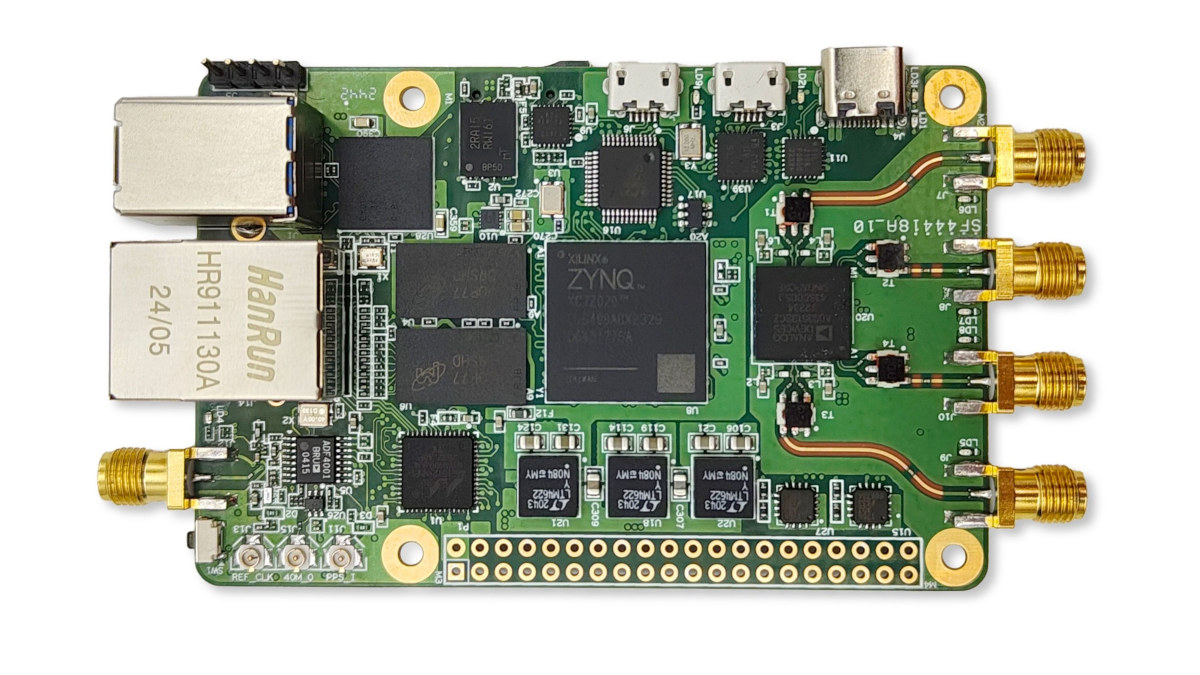The GGBEE RMW002 is a mini WiFi AC smart switch designed to make your appliances smarter. It supports a voltage range of 100-240V AC and a maximum current of 16A/20A. With built-in WiFi, the switch connects to the Cozy Life app for easy remote control of your appliances. It also supports voice commands through Amazon Alexa and Google Assistant allowing for hands-free operation. Additional features include group control, countdown timers, and dual-control wiring options. The device has very similar from-factor and features to that of a SONOFF ZBMINIR2 or SONOFF MINI Extreme (MINIR4M) but there are significant price differences if you are comparing the RMW002 to any SONOFF devices since the GGBEE switch is quite cheaper. GGBEE RMW002 specifications: SoC – Boufallo Lab BL602 32-bit RISC-V wireless SoC Connectivity – 802.11 b/g/n Wi-Fi 4 via BL602 Input Voltage range – 100-240V AC (50/60Hz) Max Current: 16A or 20A depending on […]
MNT Reform Next is an open-source, RK3588-powered modular 12.5-inch laptop (Crowdfunding)
The MNT Reform Next brings the Rockchip RK3588 processor to the modular laptop series. It retains the open-hardware nature of the older MNT Reform and introduces a lighter and more modular design, complete with a much faster processor. The MNT Reform Next separates the three port boards from the main motherboard, allowing for greater customization and modification than its predecessors. The standard processor module (RCORE) can be swapped with other modules such as the Raspberry Pi CM4, as well as NXP i.MX 8M Plus, NXP LayerScape 1028A, and AMD Kintex-7 FPGA modules. Like the classic MNT Reform and the MNT Pocket Reform, the enclosure for the Reform Next is milled from anodized, bead-blasted aluminum. Apart from being repairable and customizable, the RK3588 modular laptop is powerful enough to be a daily driver for browsing, writing, programming, gaming, graphics design, sound creation, and video editing. MNT Reform Next specifications: SoM SoC […]
vPlayer – A 1.69-inch ESP32-S3 touchscreen video display with custom expansion options
The vPlayer is an ESP32-S3 touchscreen video display that can be used for continuous MJPEG video playback from a microSD card. It features a 280 x 240 1.69-inch smartwatch-sized touchscreen display with backlight control and also offers expansion options via JST SH/SR connectors (UART, I2C, and I2S audio), and additional I/O pads on the PCB. All these features also make it suitable for applications such as weather displays, live traffic cameras, computer stats monitors, wildlife cameras, and fetching data from the Internet. vPlayer specifications: SoC – Espressif ESP32-S3 CPU – Dual-core 32-bit microcontroller @ 240MHz Memory and Storage – 4MB Flash and 2MB PSRAM Wireless – WiFi 4, Bluetooth 5.0 Storage – MicroSD card slot via MMC 4-bit interface Display – 1.69-inch touchscreen (280×240) P169H002-CTP TFT LCD ST7789V2 single-chip controller/driver CST816 touch controller Backlight control USB – 1x USB-C for power and data transfer Expansion JST SH/SR 1mm connectors for […]
SO-ARM100 is an open-source AI robotic arm kit with LeRobot integration and NVIDIA Jetson support
Seeed Studio has recently started selling the SO-ARM100 AI Robotic Arm kit, a low-cost AI arm designed for real-world robotics applications. This open-source hardware device features a 6-degree-of-freedom design with high-torque STS3215 bus servos, a 12-bit magnetic encoder for precise angle sensing, and UART for communication. The arm comes with motors, driver boards, power adapters, and other 3D-printed parts like arm segments, base, grippers, and motor mounts. Designed to work with the NVIDIA Jetson edge platform, it is ideal for grasping and placing. All these features make this device suitable for education, research, and AI-driven robotics projects. SO-ARM100 AI robotic arm kit specifications Degrees of Freedom (DOF) – 6 Motor control Total servo – 12x STS3215 bus servos Servo torque Arm kit Standard – 19.5 kg.cm @ 7.4V Arm kit pro – 30 kg.cm @ 12V (Pro) Angle Sensor – 12-bit magnetic encoder USB – USB-C for programming and testing […]
MECOOL KM9PRO MAX 4K Streaming Box runs Google TV 12.0 on Realtek RTD1325 SoC
MECOOL KM9PRO MAX 4K is a Google TV 12.0 streaming box based on the Realtek RTD1325 quad-core Cortex-A55 SoC which we initially found in the Formuler Z Mini 4K Android 12 dongle. Since it’s a more traditional TV box as opposed to an HDMI dongle, it adds features like 10/100Mbps Ethernet, optical S/PDIF output, an AV composite and audio jack, two USB 2.0 ports, while keeping the 4K-capable HDMI 2.1 port and WiFi 5 and Bluetooth 5.0 connectivity. The KM9PRO Max 4K also comes with a larger 32GB eMMC flash. MECOOL KM9PRO MAX 4K specifications: SoC – Realtek RTD1325 CPU – Quad-core Arm Cortex-A55 @ 1.7GHz with 512KB L3 cache; 20,000 DMIPS GPU – Arm Mali-G57 MC1 with OpenGL ES 3.2 VPU – 4Kp60 10-bit AV1, VP9, H.265 video decoder System Memory – 2GB LPDDR4 Storage – 32GB eMMC flash Video & Audio Output HDMI 2.1 up to 4K resolution […]
SignalSDR Pro is a high-performance software-defined radio (SDR) in Raspberry Pi form factor (Crowdfunding)
The SignalSDR Pro is a Raspberry Pi-sized SDR that brings a credit-card-sized twist to software-defined radios (SDRs). It is a compact, streamlined device suitable for tasks ranging “from signal processing and spectrum analysis to communication systems and beyond.” The SignalSDR Pro builds on the Analog Devices AD9361 radio transceiver and the AMD Zync 7020 SoC into a credit-card format reminiscent of Raspberry Pi single-board computers. The Raspberry Pi-sized SDR also features a 40-pin GPIO header for expansion with other hardware components and added functionality. The device offers a 70MHz – 6GHz tuning range, 12-bit sample rate, 61.44MHz RF bandwidth, and two full-duplex TX/RX channels via four I-PEX antenna connectors. It is also capable of emulating other SDR hardware such as the ADALM-PLUTO and USRP B210, making it easier to integrate into pre-existing workflows. The SignalSDR Pro is a mid-range alternative to entry-level SDR options such as the AntSDR E200, KrakenSDR, […]
Sanwa Supply unveils a mouse with receiver acting as a USB/HDMI dock, and a 360-degree USB-C cable
Japanese company Sanwa Supply has introduced two unusual devices to the market. First, a wireless mouse with an RF receiver that also acts as a USB dock with HDMI output, followed by a 360-degree USB-C cable to facilitate cable management. Sanwa Supply RF mouse with USB/HDMI dock Sanwa Supply 400-MAWBT209BK (black and silver) and 400-MAWBT209BK2 (black and blue) wireless mice come with a rather large USB Type-C 2.4GHz RF and Bluetooth receiver that not only allows the user to connect the mouse to a computer but also acts as a USB dock with an HDMI output port supporting up to 4Ko60 resolutions for monitors or projectors. The dock also exposes a 5 Gbps USB 3.2 Gen 3 USB Type-C port with PD support up to 100W (90W available to peripherals) which allows the users to connect peripherals such as USB SSD enclosures, memory sticks, and keyboards. Tom’s Hardware reports the […]
$249 NVIDIA Jetson Orin Nano Super Developer Kit targets generative AI applications at the edge
NVIDIA Jetson Orin Nano Super Developer Kit is an upgrade to the Jetson Orin Nano Developer Kit with 1.7 times more generative AI performance, a 70% increase in performance to 67 INT8 TOPS, and about half the price, making it a great development platform for generative AI at the edge, mostly robotics. We’ve seen several AI boxes and boards in the last year capable of offline generative AI applications like the Firefly AIO-1684XQ motherboard or Radxa Fogwise Airbox which I reviewed with Llama3, Stable diffusion, Imgsearch, etc… A product like the Fogwise Airbox delivers up to 32 TOPS (INT8) and sells for around $330 which was very competitive then (June 2024). However, the Jetson Orin Nano Super Developer Kit will certainly disrupt the market with over twice the performance, a lower price, and a larger developer community. NVIDIA Jetson Orin Nano Super specifications: NVIDIA Jetson Orin Nano 8GB Module CPU […]










